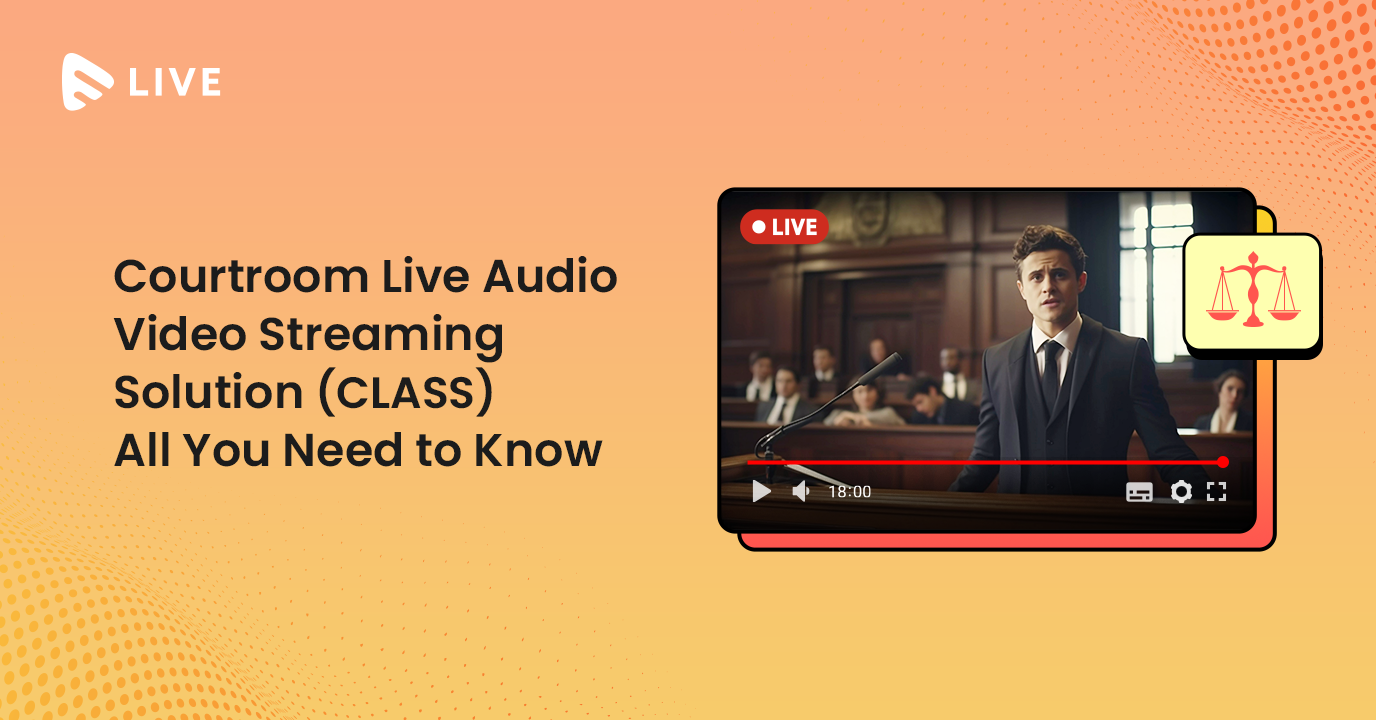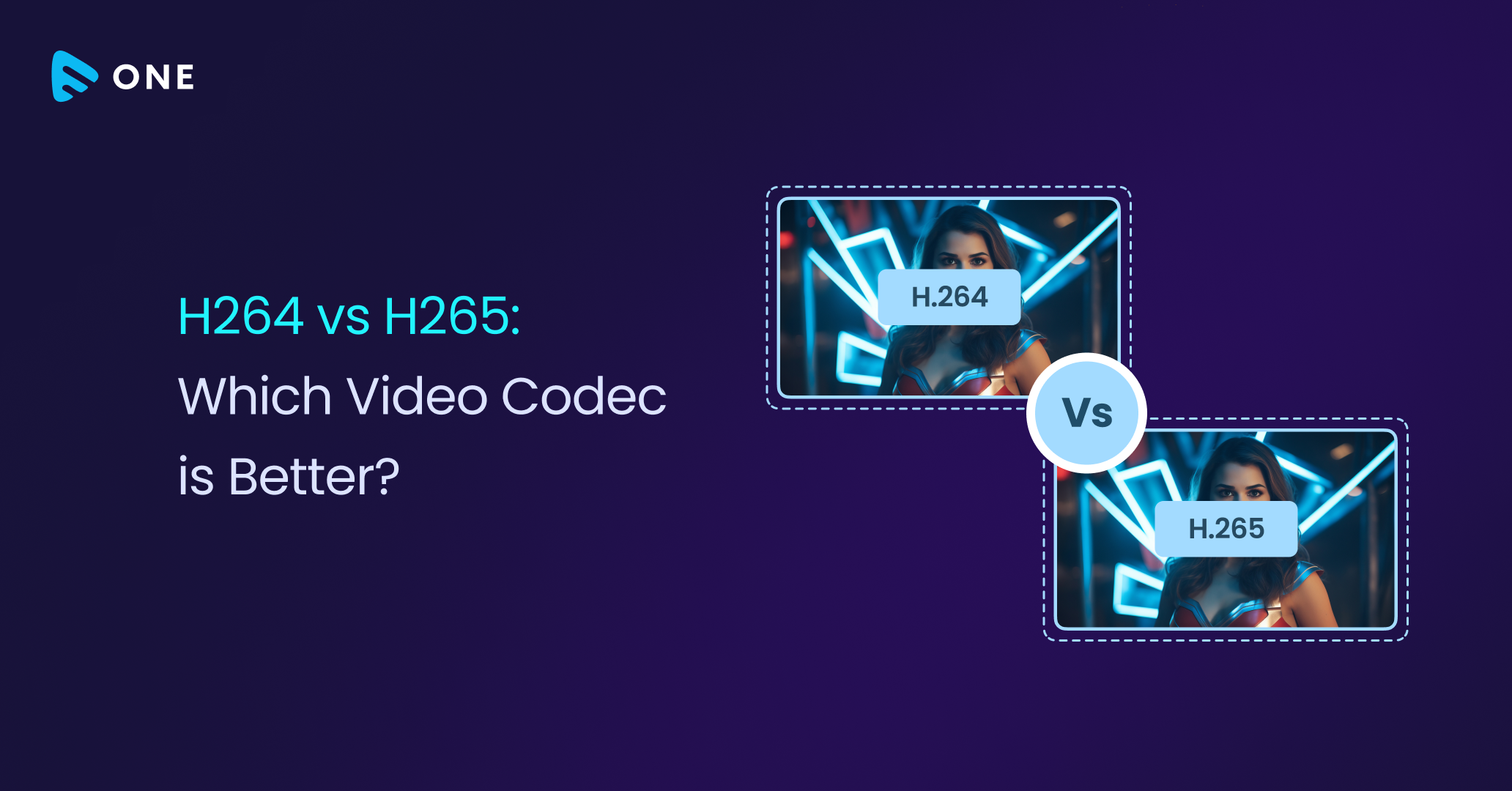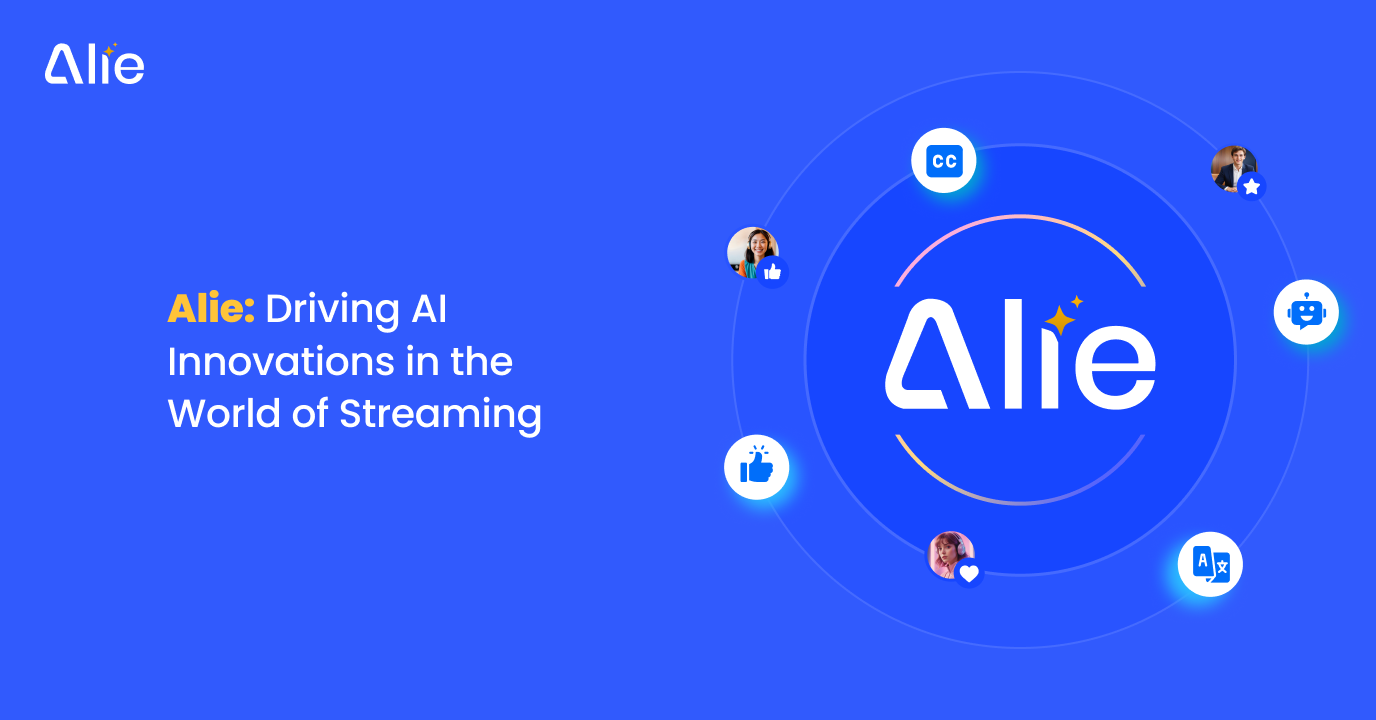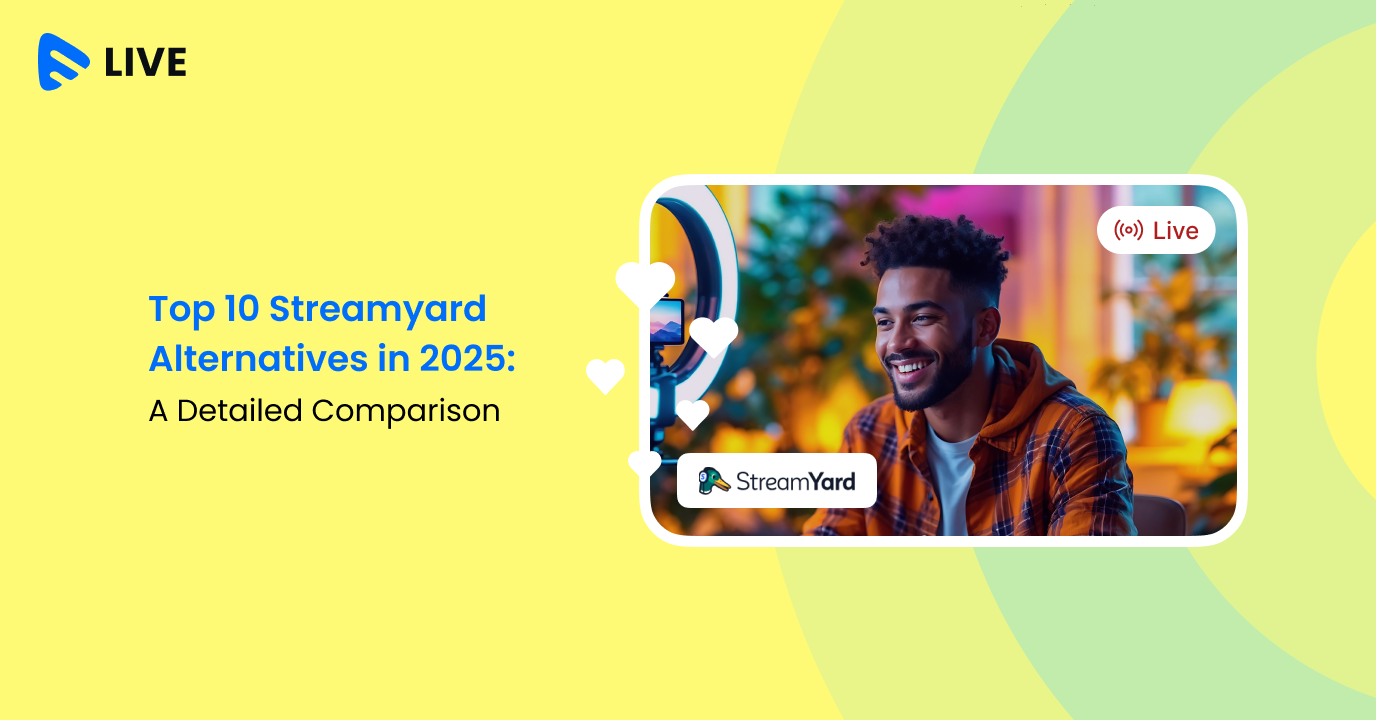In the rapidly evolving landscape of legal proceedings, technology plays a pivotal role in ensuring transparency, accessibility, and efficiency. One such groundbreaking advancement is the introduction of Courtroom Live Audio-Visual (AV) Streaming Solutions (CLASS).
CLASS (Courtroom Live Audio-Video Streaming Solution) stands out as a comprehensive and cutting-edge platform designed to revolutionize the way legal proceedings are conducted and observed.
By leveraging cutting-edge technologies, it addresses long standing challenges, offering several benefits and support for judicial research and education. This blog will serve as your go-to guide for unraveling all there is to know about CLASS.
The Origins of CLASS
In a ground-breaking judgment in 2018, the Supreme Court of India paved the way for the implementation of live court streaming across the country. Recognizing the potential benefits, the apex court acknowledged that live streaming of courtroom trials could support the legitimacy of judicial proceedings, enhance the efficiency of the Indian judicial system, and ultimately create greater public confidence in the judiciary. However, the initial adoption of free-to-use platforms like YouTube raised concerns about security and control over the streaming process.
The Initial Phase:
Following the 2018 judgment, many Indian courts enthusiastically embraced the concept of live court streaming, making proceedings accessible to the public in real-time. Platforms like YouTube were utilized for their ease of use and widespread accessibility. However, the lack of security measures and limited control over viewership and content management became apparent issues. Courts faced challenges in monitoring who was watching the streams and had limited control over the recording, archiving, and overall management of the footage.
The Supreme Court’s Directive for a Secure Streaming Workflow:
In response to the emerging challenges, the Supreme Court issued another crucial order, directing all courts to implement a secure streaming workflow. This directive emphasized the need for a more robust and controlled platform that would address the security concerns and provide courts with greater oversight over the live streaming process.
Implementation Projects Across Courts:
The order spurred a nationwide implementation project, with courts actively working to establish a secure and efficient live streaming infrastructure. This involved the adoption of platforms designed specifically for courtroom proceedings, ensuring a more controlled environment. Courts engaged in the selection and implementation of secure streaming solutions that not only facilitated live broadcasts but also offered features for user authentication, access control, and comprehensive content management.
CLASS (Courtroom Live Audio-Video Streaming Solution) – An Introduction
CLASS (Courtroom Live Audio-Visual Streaming Solution) is the method of broadcasting live courtroom proceedings that can be accessed by a huge number of viewers on their respective devices. CLASS plays an important role in fostering transparency and accountability within the judicial system. By providing real-time access to court proceedings, it enhances public trust in the legal process. The transparent nature of CLASS contributes to a more informed and engaged citizenry.
With CLASS, geographical constraints are no longer a barrier to participating in court proceedings. Authorized participants, legal professionals, and the public can remotely access live audio and video streams, fostering inclusivity and making the legal system more accessible to a wider audience.
Live Streaming of Court Proceedings streamlines judiciary processes by reducing the need for physical attendance, thus optimizing resources. Courts can operate more efficiently, allocate resources judiciously, and reduce the overall burden on the judicial system. The archived audio and video recordings provided by CLASS serve as valuable resources for judicial research and education. Legal professionals, scholars, and students can access a comprehensive database of court proceedings, facilitating academic research, legal studies, and the continuous improvement of the legal system.
What Are the Advantages of Courtroom Live Audio-Video Streaming Solution?
Transparency and Accountability:
Real-time Access: Live streaming of courtroom proceedings enhances transparency by providing real-time access to the public. This fosters accountability as it allows citizens to observe and understand the legal processes, ensuring that justice is conducted openly and fairly.
Archival Record: Courtroom Audio-Video streaming solutions often include the capability to record proceedings, creating an archival record. This recorded content can be valuable for review, analysis, and potential appeals, contributing to a more transparent and accountable judicial system.
Facilitating Remote Participation:
Accessibility: Live Streaming in Courts enables remote participation for various stakeholders, such as litigants, legal representatives, and witnesses. This is especially crucial in situations where physical presence might be challenging, such as during a health crisis or for individuals located in distant regions.
Reduced Disruptions: Remote participation can reduce disruptions caused by travel, scheduling conflicts, or other logistical challenges, making it more convenient for everyone involved in the legal process.
Supporting Judicial Research and Education:
Resource for Legal Professionals: The availability of recorded courtroom proceedings can serve as a valuable resource for legal professionals, scholars, and students. It provides a rich dataset for research, analysis, and education, contributing to the continuous improvement of legal practices and procedures.
Educational Tool: Live courtroom streaming solution can be integrated into legal education programs, allowing law students to observe real-world court proceedings, enhancing their understanding of legal processes in practice.
Optimizing Resource Utilization:
Efficient Use of Courtroom Space: Courtroom live Audio-Video streaming reduces the need for everyone involved in a case to be physically present in the courtroom, optimizing the utilization of courtroom space. This can lead to more efficient scheduling and use of resources.
Cost Savings: By enabling remote participation and reducing the need for extensive physical infrastructure, courts may experience cost savings associated with travel, accommodation, and the maintenance of large courtroom spaces.
Features a Courtroom Live Audio-Video Streaming Solution Must Include
A live courtroom streaming solution requires several essential features to ensure efficiency, security, and compliance with legal and regulatory standards. Here is an elaboration on the key features you mentioned:
Live Proceedings Streaming:
- High-Quality Video: Ensure the solution supports high-quality video streaming for clear and accurate representation of courtroom proceedings.
- Ultra Low Latency: Minimize the delay in live streaming to provide real-time access to users.
On-demand Case Files & Videos:
- Case File and Video Archive: Store and organize case files and videos for easy retrieval.
- Local Storage Integration: Allow courts to integrate with local storage solutions for secure and accessible file storage.
Cater to Multiple Courtrooms:
- Multiple Courtroom Streaming: Support simultaneous streaming from multiple courtrooms.
- Scalable CDN Infrastructure: Implement a scalable Content Delivery Network (CDN) to handle varying levels of demand.
- Low Latency On-demand Videos: Ensure quick access to on-demand videos with minimal latency.
Robust Content Protection:
- Digital Rights Management (DRM): Implement DRM technologies to protect the intellectual property and prevent unauthorized access.
- Regulatory Compliances: Adhere to legal and regulatory standards governing the streaming and protection of legal content.
- Multi-level Firewall: Deploy robust firewalls to safeguard against unauthorized access and cyber threats.
- SSL Encryption: Encrypt data transmission using SSL to ensure secure communication.
- User Authentication: Implement strong user authentication mechanisms to control access to sensitive information.
- Geo-blocking: Restrict access based on geographical location to comply with regional restrictions.
- VPN Detection: Implement mechanisms to detect and prevent access through VPNs to maintain transparency.
Analytics & Reporting:
- Usage Analytics: Provide insights into user engagement, popular cases, and other relevant metrics.
- Reporting Tools: Generate reports on streaming performance, user activities, and system health.
How Muvi Can Help Courts across the globe with Live Streaming of Court Proceedings?
Production & Live Streaming
Muvi plays a fundamental role in elevating production standards and enabling live streaming of courtroom proceedings. By seamlessly integrating with state-of-the-art CCTV cameras, a Video Monitoring System, and advanced audio equipment, Muvi ensures the capture of top-notch video and audio quality. The incorporation of real-time encoding and adaptive bitrate streaming not only enhances the overall user experience but also ensures a smooth playback for end users, irrespective of their network or device.
Courtroom Metadata Mapping
Muvi streamlines complex courtroom metadata mapping by seamlessly integrating with Command, Control, Communications, Computers, and Intelligence (C4i) software. This integration guarantees the precise cataloging and effortless retrieval of pertinent information, including case details, timestamps, and participant identities. The incorporation of C4i significantly improves the overall organization and management of courtroom data. This allows end-users to access case data prior to the live stream feed becoming visible.
Court Case Recording and On-Demand Delivery
Upon the initiation of live-streaming, concurrent real-time content recording begins. The resulting recorded file transforms into video-on-demand, seamlessly replacing the live stream. Leveraging Muvi’s advanced encoding and transcoding capabilities, the video stream undergoes conversion into a streamable digital format featuring various resolutions. This ensures a superior video quality and a buffer-free viewing experience, irrespective of users’ network bandwidth.
Muvi provides a user-friendly interface through its website and multi-platform apps, facilitating end-users in accessing videos of courtrooms effortlessly. Across all platforms, Muvi incorporates an intuitive search functionality for swift retrieval of case videos.
Case Files Archival on Local & Cloud Storage
Muvi plays helps in streamlining the comprehensive archival process through its versatile and robust approach. The platform seamlessly integrates with Local Media Asset Management (MAM) systems, enabling on-premises archiving for easy retrieval of historical court data.
Muvi facilitates the seamless transition of archived data to cold storage, adhering to the configured archival period. Typically, Media Asset Management (MAM) software retains all recorded court case files for an initial 90-day period (which can be adjusted based on specific requirements), after which they are automatically transferred to cold storage.
Security Framework & Compliance
From real-time streaming to on-demand content, our platform employs robust safeguards against illegal downloads, unauthorized access, and screen recordings through a built-in multi-DRM system. All video streams on the portal undergo encryption, ensuring a highly secure environment. In addition to encryption, we bolster these video streams with advanced security features, including a multi-level firewall, SSL encryption, geo-blocking, VPN detection, and more. Muvi adheres to numerous regulatory compliances mandated by government entities and judiciaries, such as ISO 2700:2013, VPAT® Version 2.4, PCI-DSS, GDPR, and the Americans with Disabilities Act (ADA).
Customization and Support
Muvi provides a live courtroom streaming solution that can be customized to suit the specific needs of eCourts, offering a flexible and adaptable implementation. Muvi’s versatility allows for seamless integration with other third-party systems through APIs and SDKs, ensuring compatibility and comprehensive functionality.
Ending Notes
Courts across the globe looking for a streaming solution for Live Courtroom Streaming can use Muvi’s no-code and easy-to-use platform – Muvi Live to broadcast live courtroom proceedings in real-time and deliver the same as on-demand content too.
Muvi Live offers the ability to live stream courtroom proceedings, promoting transparency and openness within the judicial system. By making these streams available on the website, individuals such as the public, journalists, civil society activists, and law students can access them in real-time, regardless of their location or internet connection.
Additionally, these proceedings can be recorded and documented, allowing for on-demand viewing and serving as valuable academic material. The implementation of robust security measures ensures that only authorized users can access the live stream, effectively preventing digital infringement and addressing any potential national security concerns.
Try courtroom live streaming with Muvi Live and bring transparency in the judicial system!

















Add your comment